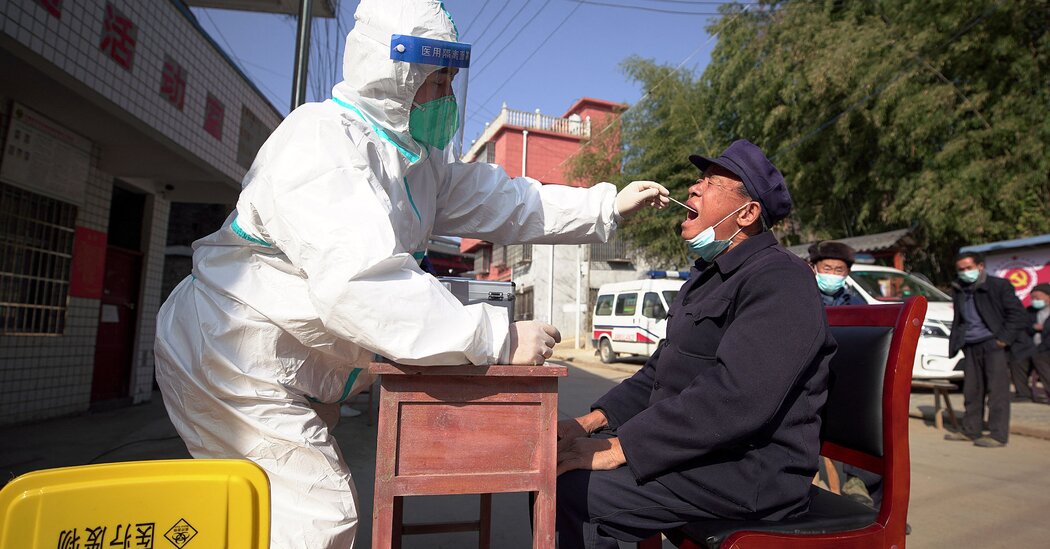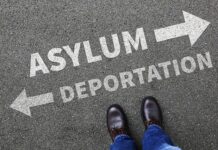
The Biden administration, fearful that a surge of coronavirus infections in Beijing could spawn a new and more dangerous variant, announced on Wednesday that it will require travelers from China, including Hong Kong and Macau, to present negative Covid-19 tests before entering the United States.
The requirement will take effect on Jan. 5, according to the Centers for Disease Control and Prevention, which made the announcement. Officials at the agency say they are deeply concerned over China’s lack of transparency about its outbreak — and, in particular, its failure to track and sequence variants and subvariants that are circulating within its borders.
C.D.C. officials said the requirement for testing will apply to air passengers regardless of their nationality and vaccination status. It will also apply to travelers coming from China who enter the United States through a third country, or who connect through the United States to other destinations. Italy and Japan have already imposed similar restrictions, and India has mandated negative Covid-19 test reports and random screening at airports for passengers arriving from China, Japan, South Korea, Hong Kong and Thailand.
But as they did when President Donald J. Trump imposed pandemic travel limitations, some experts questioned whether the testing requirement would do any good — especially given the surge in cases in some parts of the United States. In the northeast, scientists say virus spread is being fueled by an Omicron subvariant, XBB, which appears to be spreading more quickly than ones related to the dominant variant in Beijing.
“I understand politically why it must be done, but the bottom line is, it’s a false sense of security that we’re really slowing transmission,” said Michael T. Osterholm, the director of the Center for Infectious Disease Research and Policy at the University of Minnesota.
But President Biden’s coronavirus response coordinator, Dr. Ashish K. Jha, took issue with the comparison to how Mr. Trump had restricted entry by foreigners coming from China early in the pandemic.
The Biden administration’s policy “isn’t a ban on travel at all,” Dr. Jha said in an emailed statement after this article was published online. Rather, he called it a “prudent” testing requirement for all travelers coming from China, not just nationals of that country, that is necessary “because China — unlike virtually every other major nation — is not updating the global database on Covid cases and Covid variants.”
Understand the Situation in China
The Communist Party cast aside restrictive “zero Covid” policy, which set off mass protests that were a rare challenge to the Communist leadership.
China’s Covid outbreak has been worsening in recent days, with local governments reporting hundreds of thousands of infections a day. Videos obtained by The New York Times show sick patients crowding hospital hallways. But the situation is difficult to track in real time because China does not release reliable Covid data.
The C.D.C. also announced on Wednesday that it was expanding a voluntary genomic surveillance program that looks for new variants in anonymous swabs taken from international travelers at major American airports to include Los Angeles and Seattle.
The Biden administration has offered vaccines and other Covid-19 support to China, but that assistance has been rejected, federal officials said. Secretary of State Antony J. Blinken also spoke with Foreign Minister Wang Yi of China shortly before Christmas and “underscored the importance of transparency for the international community,” the State Department said.
Some experts worried that instead of encouraging transparency from China, the new policy could make the Chinese even less forthcoming.
“The most important strategy right now is we need to improve our political and diplomatic communication with China,” said Dr. Carlos del Rio, an infectious disease expert at Emory University. He said he feared that the Biden administration’s new policy would work “in the opposite direction.”
But Jennifer Nuzzo, director of the Pandemic Center at the Brown University School of Public Health, said the administration had little choice.
“I think they are rightly trying to put some pressure on China to uphold its international responsibilities,” she said, adding that the “compact of agreement” that calls on countries to share data about a pandemic “is only going to work if countries call out bad behavior.”
After three years of insisting on a “zero Covid” policy, China made an abrupt turnabout in early December and lifted that policy, after mass protests over lockdowns that threatened the ruling Communist Party. Since then, there has been a dramatic uptick in the number of cases in Beijing.
A major concern among public health officials is that the Chinese population has little natural immunity, allowing the virus to spread rapidly. Rapid spread, in turn, creates new opportunities for the virus to evolve, posing a risk that new variants may emerge and spread to other parts of the world.
Scientists say that does not necessarily mean that a more dangerous variant will soon emerge in China. Over the last year, people in the United States have gotten infected with waves of Omicron subvariants. But because people in China have essentially been walled off from those versions of the virus, scientists said that any of them could take off there.
“In some sense, whatever took off first is probably going to be dominant there,” said James Wood, an infectious disease expert at the University of New South Wales in Sydney.
Some past variants are believed to have emerged when the virus mutated during lengthy infections in people with compromised immune systems, suggesting that the amount of transmission in a given place may not on its own determine the likelihood of new variants developing.
“While there is an argument that with more people being infected, there may be more opportunity for mutation and the development of a new variant,” said Jeffrey Shaman, an infectious-disease modeler at Columbia University, “we still don’t know whether new variants predominantly develop during passage from person to person or within persons who experience extended infections.”
Scientists in Hong Kong have reported that an Omicron subvariant known as BF.7 has been responsible for the Beijing outbreak. That variant is a sublineage of BA.5, which had until recently been dominant in the United States. But BF.7, while present in the United States for months, has not shown signs of outcompeting other versions of Omicron in the country.
The C.D.C. estimated that BF.7 made up 4 percent of cases in late December, and that it had become less common since November. Other Omicron subvariants that scientists believe may be more adept at evading existing immune responses, including XBB, are currently more prevalent in the United States.
In the United States, the C.D.C. estimated last week that the XBB subvariant has grown to account for nearly a fifth of cases in the country, up from only 3 percent of cases a month earlier.
XBB is spreading especially quickly across the northeast United States, scientists have said, accounting for more than half of new infections there. And it appears to have an advantage over the BQ.1 Omicron subvariants that have lately been dominant in the United States, scientists said.
Scientists are in the early stages of studying the XBB subvariant. They said that an even newer version of that subvariant had emerged, known as XBB.1.5. Preliminary studies have suggested that the newer version is adept at evading existing immune responses and at binding to human cells.
Especially in a few months, once more people in China have a degree of immunity from previous infections and the virus comes under more pressure to evolve there, it will be important to scan for new variants, scientists said.
“It would be nice if China were providing some kind of summary of what variants they were seeing,” said Dr. Wood, of the University of New South Wales. “Otherwise, in the end, that gets picked up in genomic surveillance in Europe or the U.S. or wherever people are traveling.”
Still, he said, for the moment, China did not pose an outsized risk of spawning a new variant.
“We’ve had a huge number of infections internationally,” he said. “That’s a lot more infections than have occurred in China alone.”
Emily Anthes and Karan Deep Singh contributed reporting.







